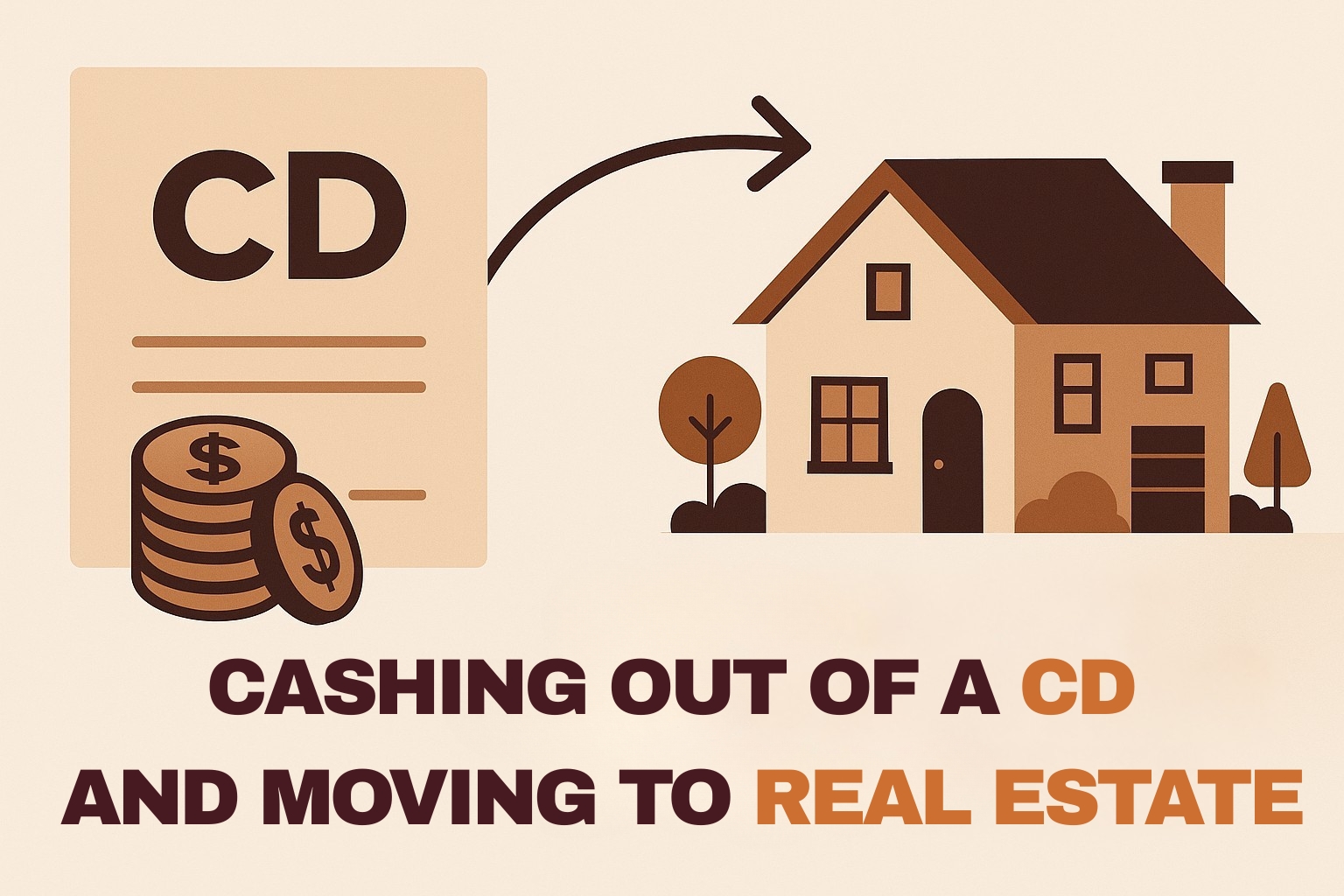When your certificate of deposit (CD) matures, you’re faced with a decision — renew it, move it to another savings product, or put your money to work somewhere with higher potential. Many investors today are choosing the latter.

While CDs offer stability and predictable returns, their limited growth potential becomes increasingly clear once you account for inflation, taxes, and opportunity cost. For those seeking stronger long-term performance, real estate — especially income-producing rental properties — offers a more dynamic alternative.
Cashing out a CD means withdrawing your funds after the term ends or during the grace period before automatic renewal. If you withdraw before maturity, most banks charge an early withdrawal penalty — typically equal to several months of interest.
The key is timing. Most CDs have a short grace window (often 7–10 days) after maturity to withdraw or move funds before they’re locked into a new term automatically. Many savers let CDs roll over without realizing the opportunity they’ve missed — to reallocate capital into higher-yielding investments.
Even when rates are elevated, CDs tend to offer modest real returns. If you’re earning 4% APY but inflation is around 3%, your purchasing power is only improving by roughly 1% a year. That’s before factoring in taxes on interest income, which further reduce your effective gain.
For short-term savings goals, CDs serve a purpose. But for wealth building, they struggle to keep up. Over a decade, that difference compounds — the same funds that might grow by a few hundred dollars in a CD could produce many times that in well-selected real estate.
Real estate offers something CDs never can: the power of compounding through income plus appreciation.
Real estate also behaves differently under inflation. While inflation quietly erodes the value of money sitting in a CD, it often boosts property values and rental rates. Because homes and land are tangible assets tied to real-world demand, they tend to rise alongside the cost of goods and construction.
In other words — what hurts savers can help investors.
If your CD is approaching maturity, here are practical steps to transition without losing ground:

Let’s say you have $10,000 in a 12-month CD earning 4% APY. After one year, you’ll have $10,400 — a $400 gain before taxes and inflation.
Now, consider that same $10,000 invested in real estate shares generating an estimated 8% annual dividend yield from rental income. After a year, you’d earn about $800 — and still have the potential for property appreciation on top of that. Over several years, the compounding difference becomes dramatic.
CDs play an important role in conservative portfolios — they offer peace of mind and predictable returns. But for investors seeking real growth, that same stability can become a ceiling.
By redirecting maturing CD funds into real estate, you’re not abandoning safety — you’re aligning your money with assets that historically keep pace with inflation and generate ongoing cash flow.
With Realbricks, you can start small, stay diversified, and see your returns compound from both quarterly dividends and property appreciation — a strategy built not just for saving, but for growth.
CDs preserve value. Real estate builds it.
Start investing with Realbricks today — and turn your savings into something that grows.
Disclaimer: Investing in real estate involves risks, including the potential loss of capital. This content is for informational purposes only and is not intended as investment advice. Investors should perform their own research and consult with financial professionals before making investment decisions.
Be the first to know about property launches, portfolio updates, and announcements by subscribing to our newsletter.